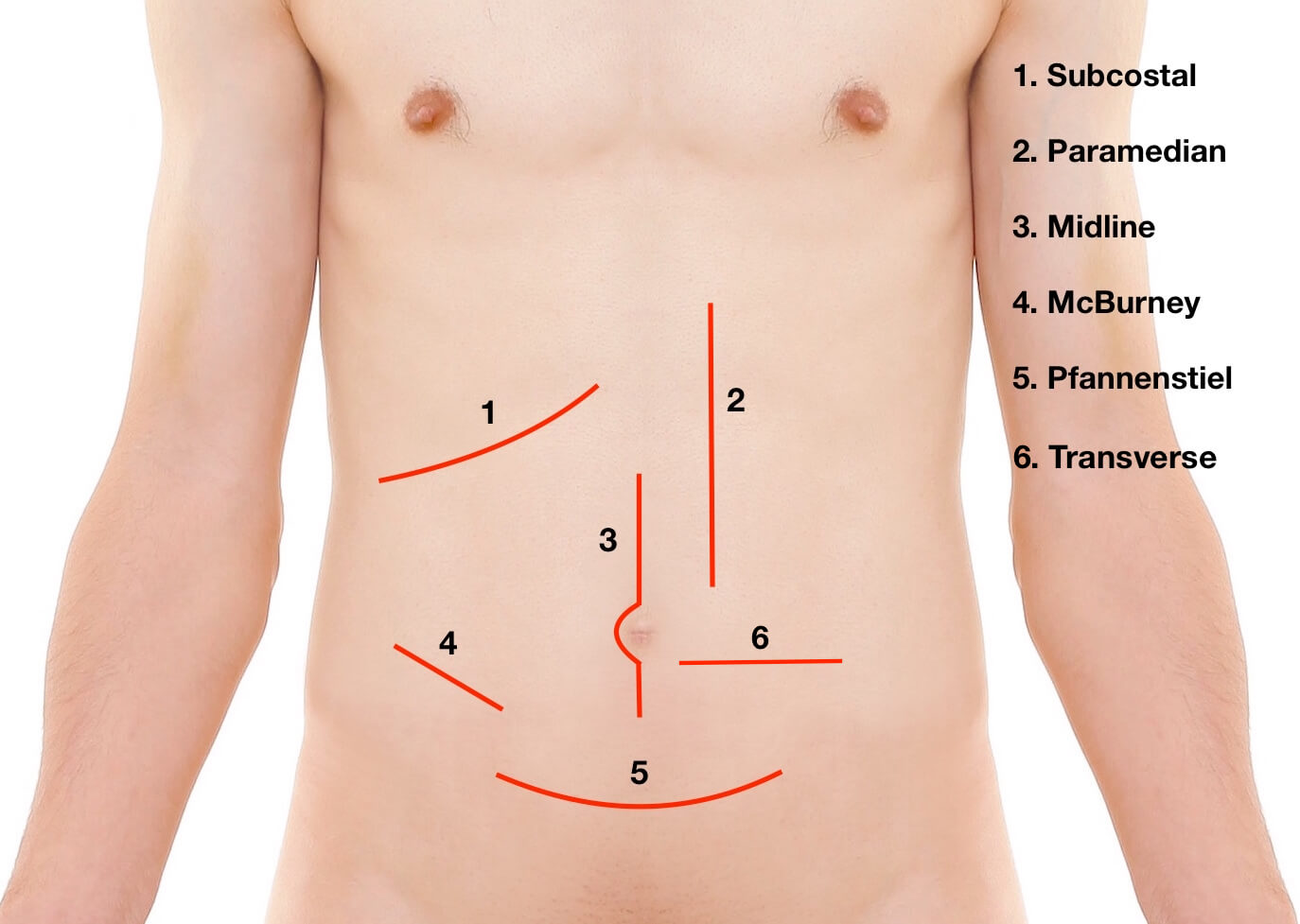Langer’s lines, which are sometimes referred to as the skin cleavage lines, are a series of lines drawn topographically across the human body. They correspond to the natural orientation of collagen fibres in the dermis and usually lie parallel to underlying muscle fibres. They are an important consideration in surgery and if incisions are made in the direction of Langer’s lines they tend to heal better and produce less scarring than those that cross them.

Fig 1. A topographical map of Langer’s lines (from Rauber’s Lehrbuch der Anatomie by Dr. F. Kopsch)
There are numerous different types of surgical incision that are used in a variety of different surgical scenarios. Ideally an incision should provide easy access to the desired structures, be aesthetically pleasing and heal quickly with minimal scarring. Additionally muscles should be split, not cut, if possible and the incision should be amenable to extension if required.
Some of the most commonly used abdominal incisions include:
- Subcostal incision:
A standard subcostal incision, sometimes referred to as the Kocher subcostal incision start at the midline, approximately 2-5 cm below the xiphoid and runs about 2.5 cm below and parallel to the costal margin. It allows access to the gallbladder, biliary tract and spleen.
- Paramedian incision:
The paramedian incision is made 2-5 cm to the left or right of the midline over the medial aspect of the transverse convexity of the rectus. It allows access to lateral lying structures such as the kidneys, adrenals and spleen.
- Midline incision:
This incision is made in the midline and can extend from the xiphoid process to below the umbilicus. The incision should be curved around the umbilicus if it is to extend this far. Virtually all abdominal procedures can be preformed through a midline incision.
- McBurney incision:
The McBurney incision is made obliquely starting laterally above McBurney’s point and ending medially below it. It is the incision used for most appendicectomies but can also be used in the left iliac fossa for left-sided colonic pathology.
- Pfannenstiel incision:
This is a 12 cm convex incision, located at the suprapubic skin crease approximately 5 cm superior to the pubic symphysis. It allows access to the lower gastrointestinal tract, urinary tract and the pelvic reproductive organs.
- Transverse incision:
The transverse incision is made slightly lateral and inferior to the umbilicus. It allows access to the colon, duodenum, and pancreas, and is fairly commonly used due to the low risk of damage to the nerve supply to the abdominal muscles.

Fig 2. Commonly used abdominal incisions.
Thank you to the joint editorial team of www.anatomyprep.co.uk for this ‘Exam Tips’ blog post.
Header image used on licence from Shutterstock







Good job
Thank you for making it more clear
Useful reminder. Thank you!